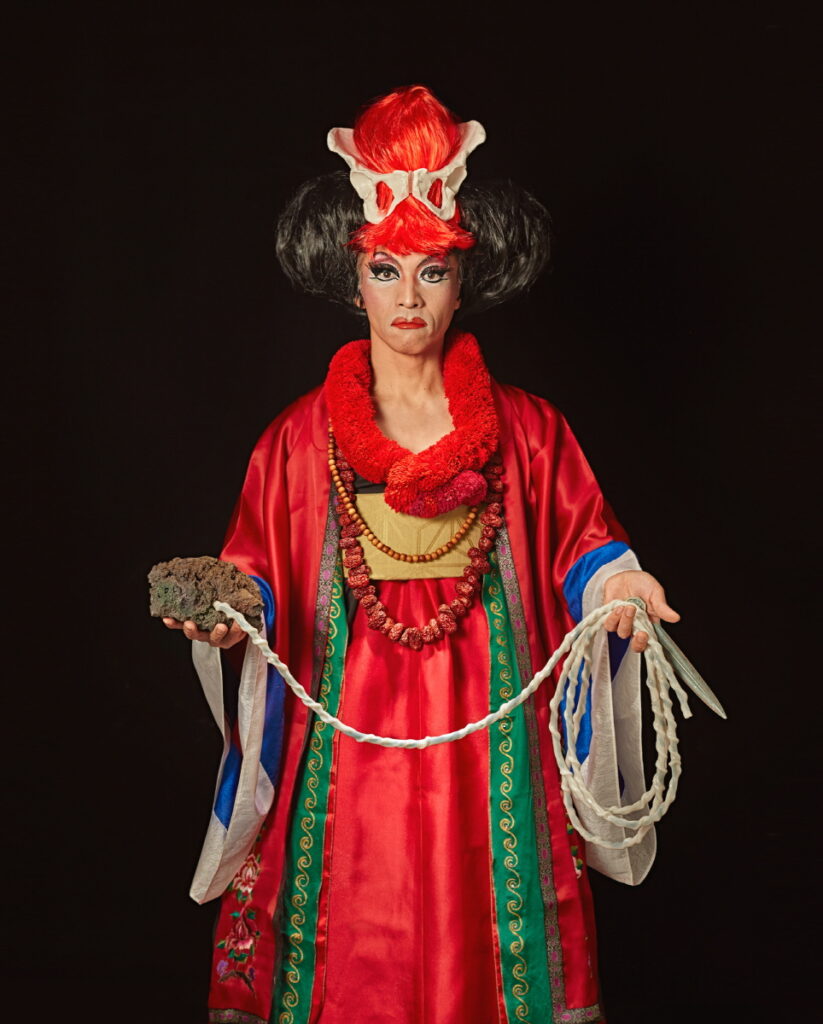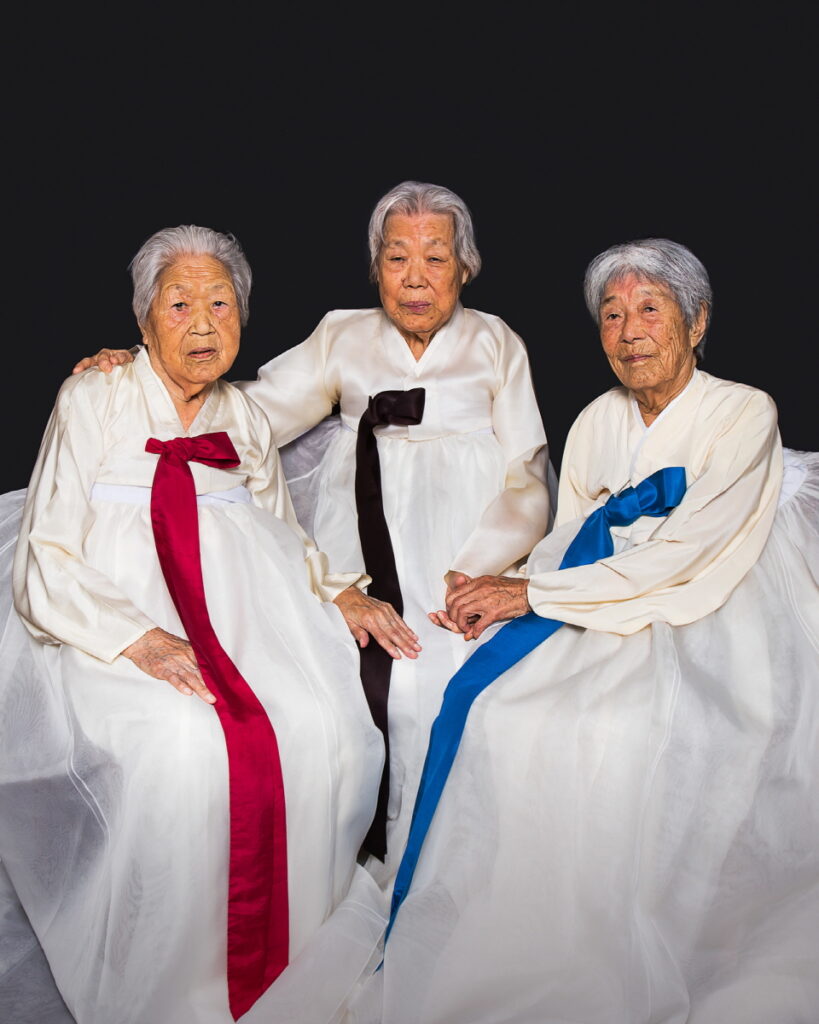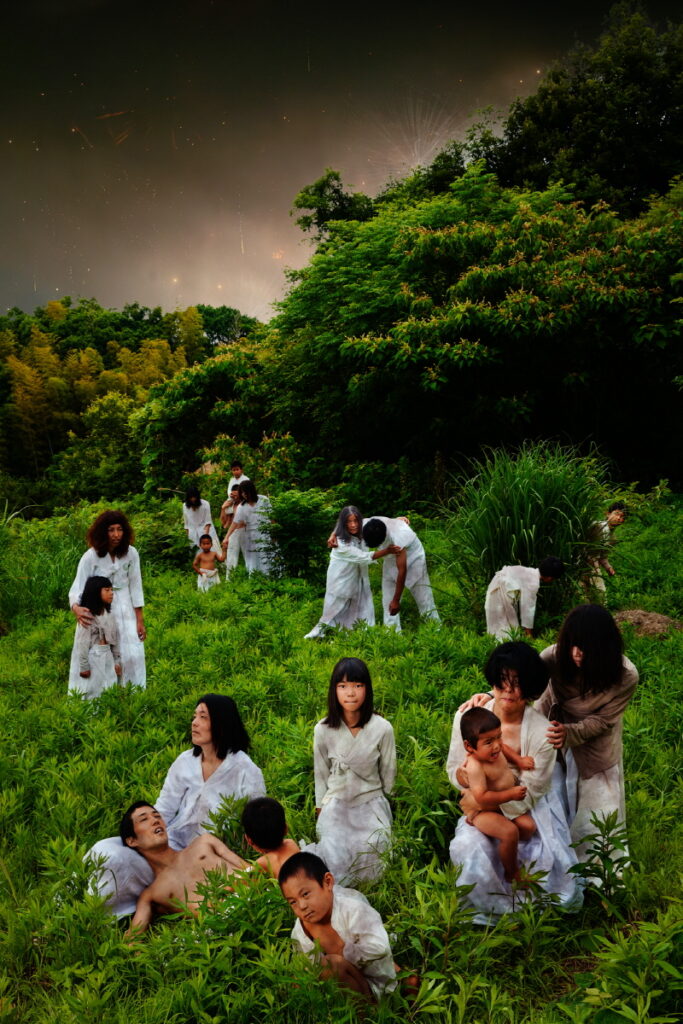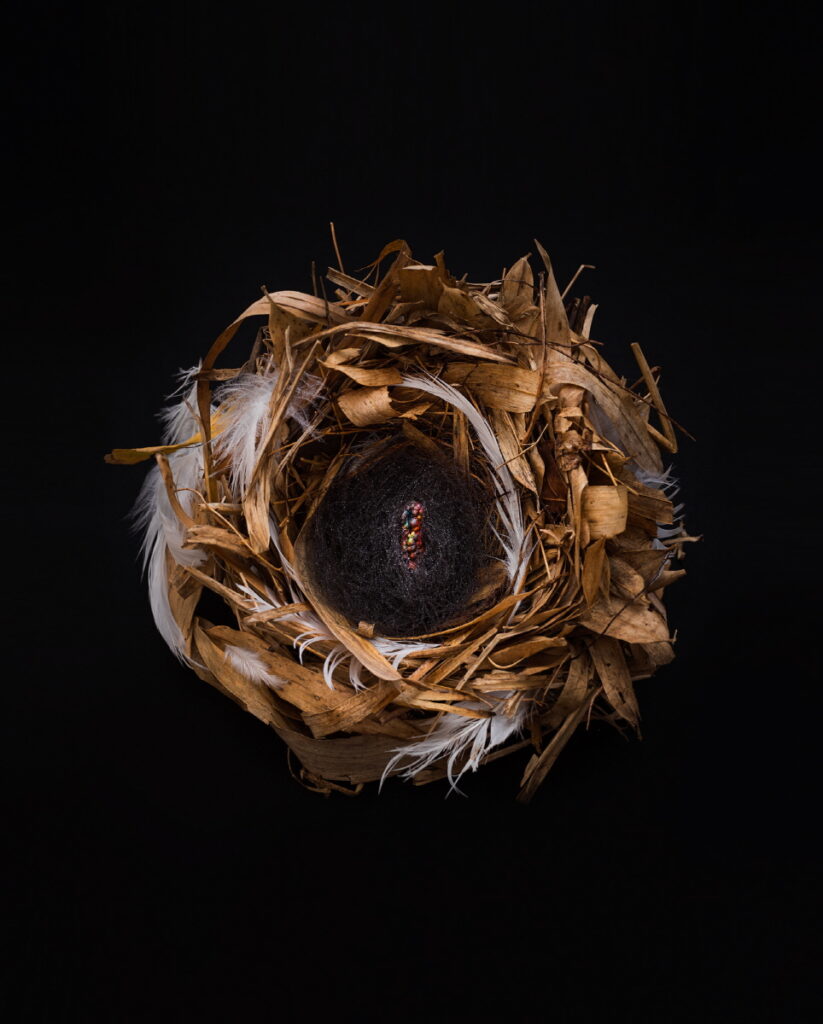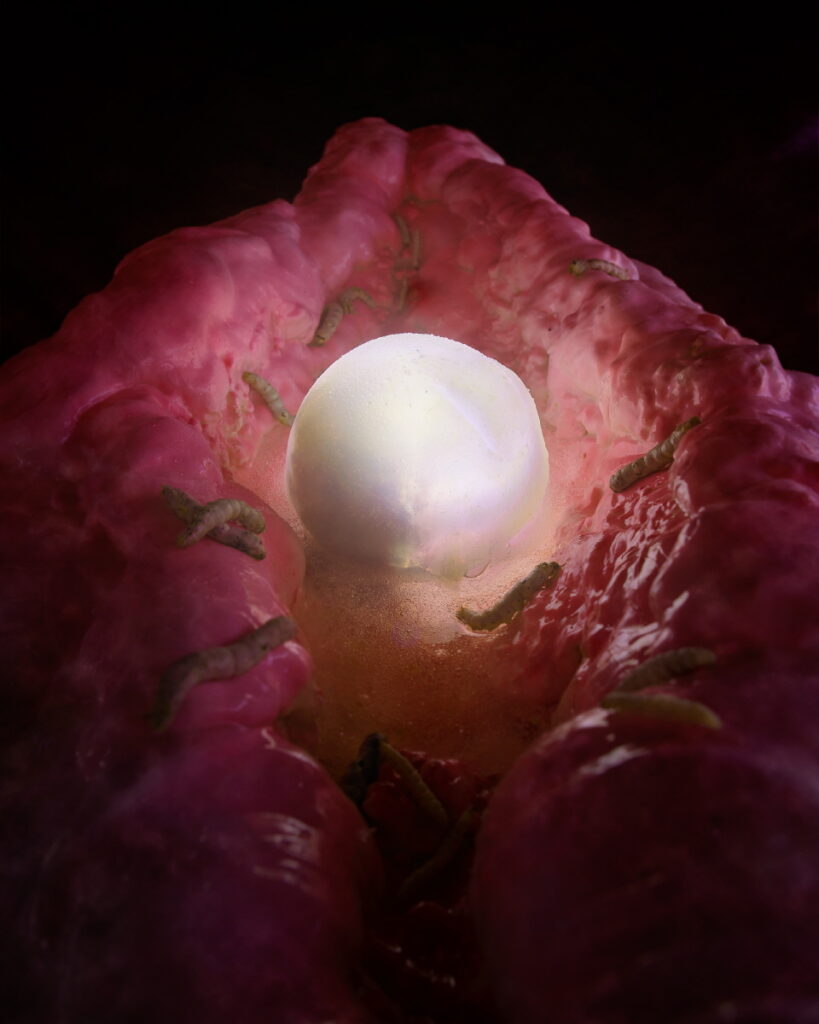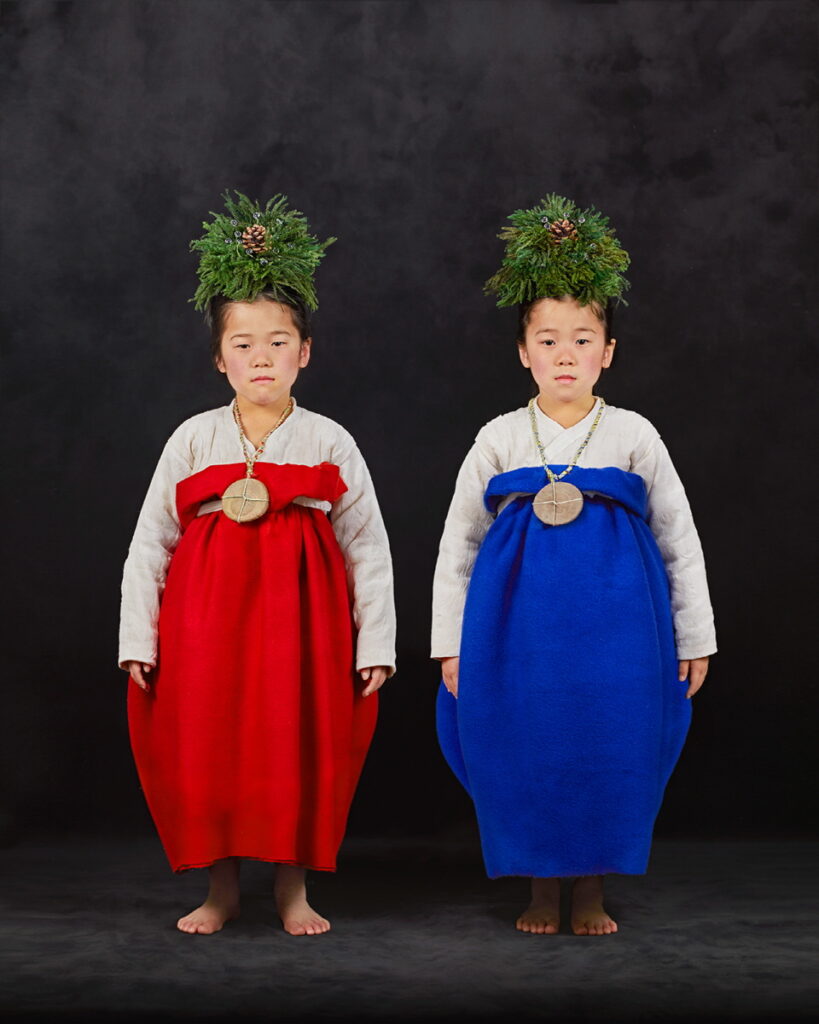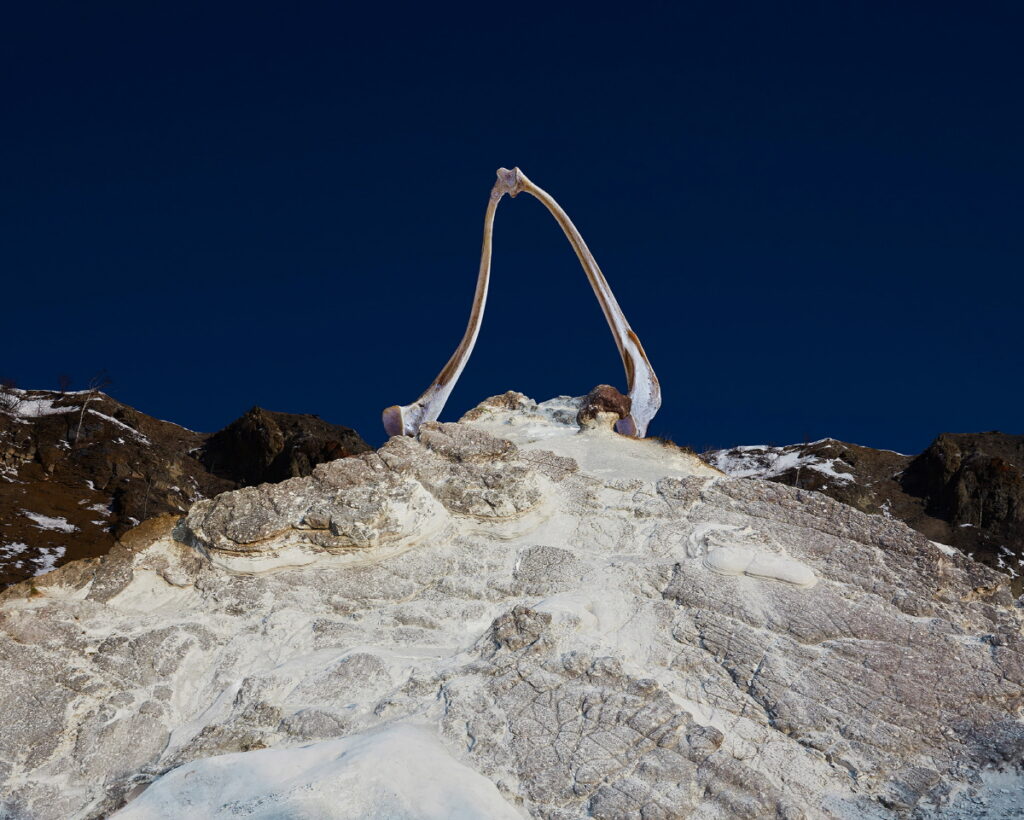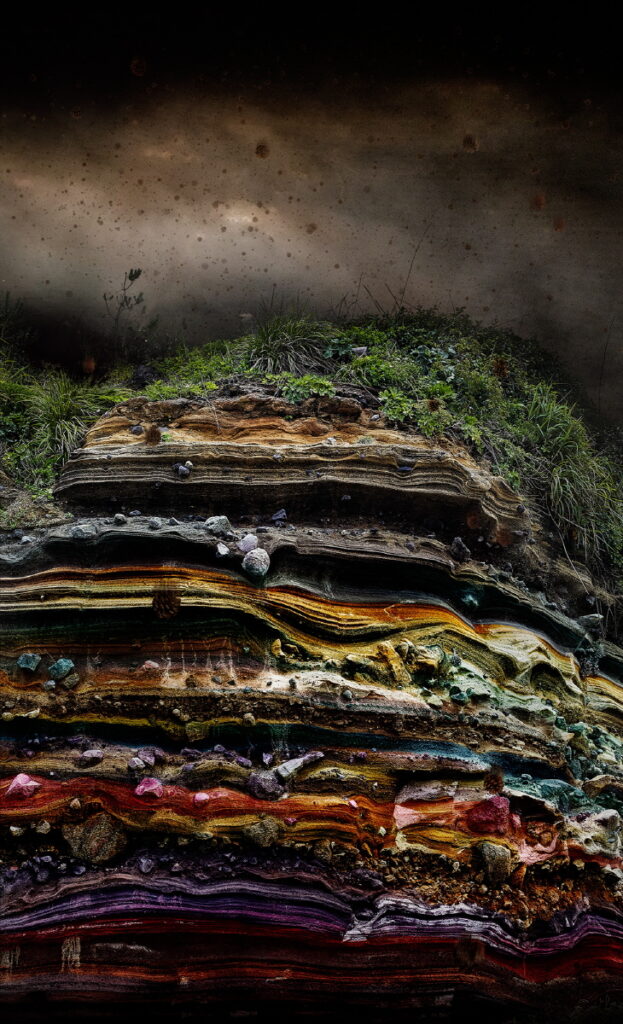

2024.08.22(목) 17:00
2024.08.24(토) 14:00
화요일(Tues)부터 일요일(Sun) 11:00-19:00
*매주 월요일은 휴관입니다
생명은 모두, 원의 중심에서 온다.
영원이라고 불리는 것은 물 속을 지나서, 그릇이라고 불리는 것은 물 속을 지나서.
영혼이 그릇 안에 담길 때, 비로소 하나의 존재가 삶을 이룬다.
탯줄이 연결되어 있을 때 아직 인간은 자연의 일부이며, 짐승들과 마찬가지였다.
불을 다루고, 칼을 만들어 탯줄을 잘랐을 때, 비로소 짐승에서 인간이 되는 것이다.
남자도 여자도 아닌 자에 의해, 그 의식은 행해졌다.
- 김사직
《생명은 모두, 원의 중심에서 온다》는 재일 한국인 3세 김사직(Kim Sajik) 작가의 국내 첫 개인전이다.
지난 10여 년 동안 작가는 한국의 전통 설화를 바탕으로 태초의 탄생과 존재의 근원, 정체성의 문제를 동시대적 서사로확장시켜왔다. 특히 동명의 사진집으로 발간되기도 한 대표작 “STORY”는 일본 사회의 이원론 속에서 방황하는 주인공 ‘나'의 세계관을 무대 사진의 기법으로 표현한 시리즈로, 디아스포라로서 고국을 잃은 자신이 새로운 고국을 만드는 일종의 건국 신화를 전통적 모티브와 동시대적 모티브를 교차시키며 창조해낸다. 작가에게 재일 한국인의 디아스포라란 식민지배, 전쟁, 차별에 관한 집단적 트라우마를 상속받았음을 의미하지만, 세계에 편재하는 타자와 비타자의 이원론을 극복하려는 개인적 분투란 결국 그 트라우마로 매개된 공간에서야 비로소 가능해지는 것이기도 하다. 이번 전시는 작가가 관객들에게 안내해왔던 바로 그러한 공간들을 망라해보는 자리다. 여기서의 ‘신화'는 환원 불가능한 것으로서의 특정한 혼종성 그 자체를 있는 그대로 드러내기 위한 장이라 할 수 있는 한편, 그 바깥 누군가의 다른 기억에도 열려 있는 원형질적인 이미지로도 작동할 수 있을 것이다. 작가와 깊이 연결된 한국에서 열리는 이번 전시에서, 관객들이 저마다의 진입로를 찾을 수 있기를 기대한다.
All life issues forth from the center of circle.
What we call the soul passes through the water. What we call the vessel, the body, passes through fire.
The only become life when the soul takes its place in the body.
When the umbilical cofrd was connected, humankind was still one with nature, just like animals.
It is only through using fire to create a blade and cut the umbilical cord that the animal was finally able to become human.
The ritual was performed by someone who was neither man and woman.
_Kim Sajik
All life comes from the center of the circle is the first solo exhibition in Korea of Kim Sajik, a third-generation Korean - Japanese artist. Over the past decade, the artist has been expanding the traditoi nal Korean narrative of the birth of the world, the origin of existence, and the question of identity into a contemporary narrative. In particular, the representative work "STORY," which was also published in a photography book of the same titel , is a series that expresses the worldview of the protagonist, "I," who wanders in the dualism of Japanese society, through the technique of staged photography, and creates a kind of founding myth in which the artist creates a new homeland after losing his homeland as a diaspora, crossing traditional and contemporary motifs. For the artist, the Korean diaspora in Japan means inheriting collective traumas of colonization, war, and discrimination, but the individual struggle to overcome the ubiquitous dualism of Other and Non-Other in the world is only possible in a space mediated by that trauma. This exhibition encompasses the very spaces that the artist has been guiding viewers through. The 'myth' here can be seen as a place to reveal a certain hybridity itself as irreducible, but it can also work as
archetypal images that are open to other memories of others. In this exhibition in Korea, a country deeply connected to the artist, we hope that viewers will find their own way in.

